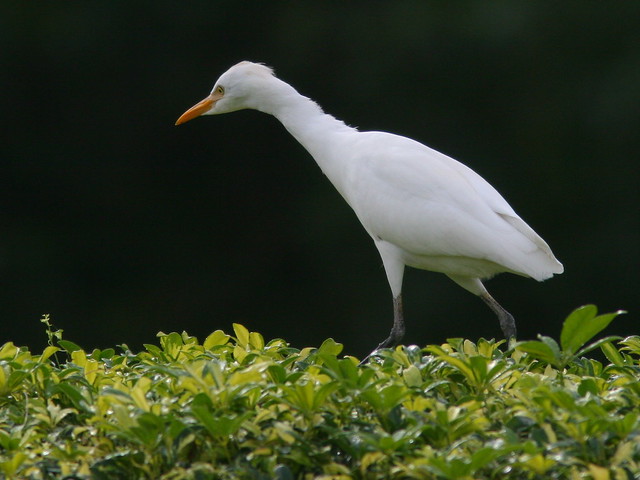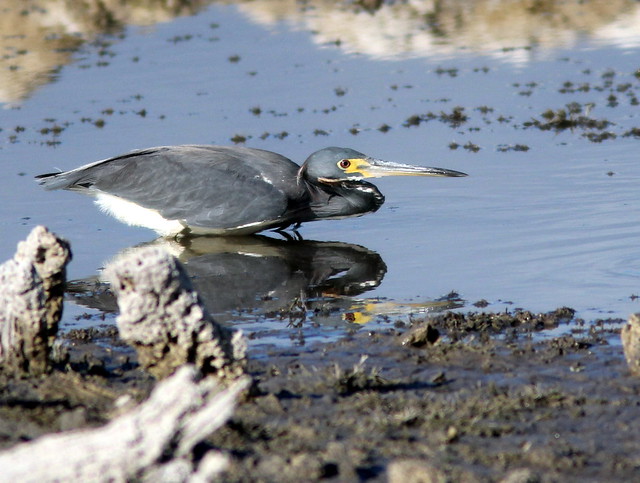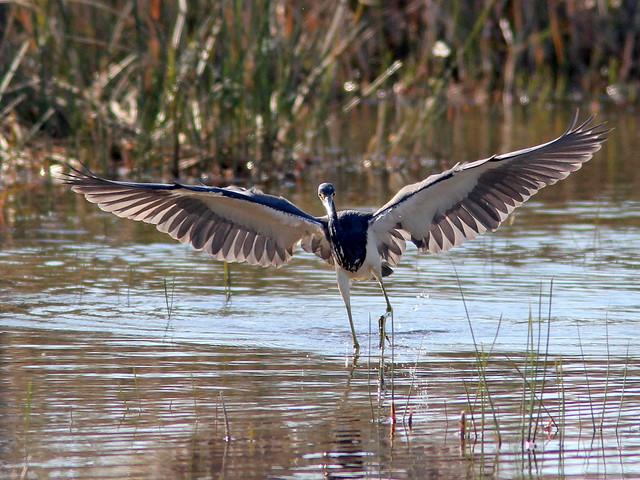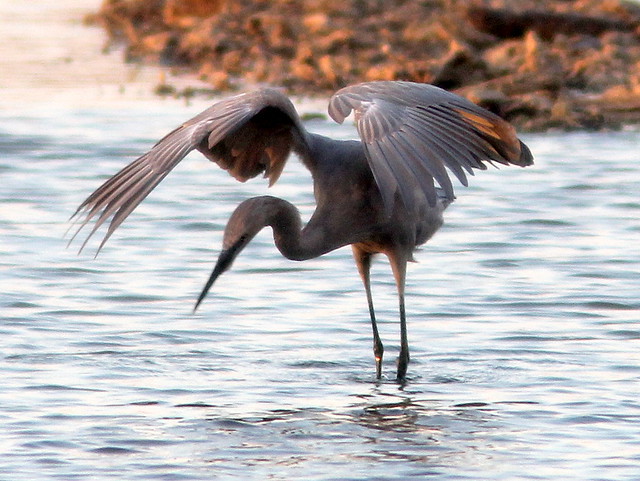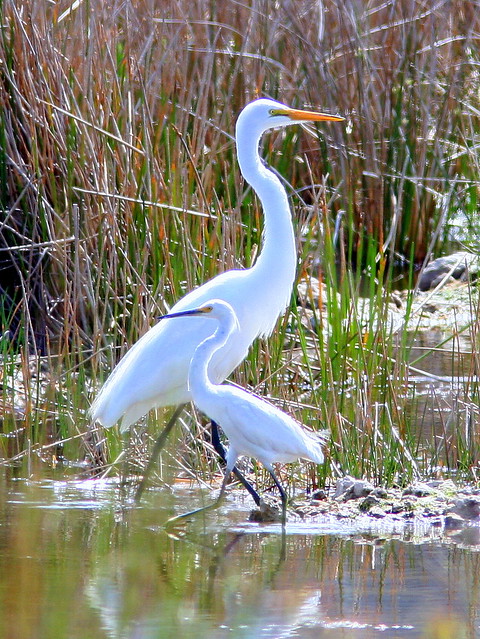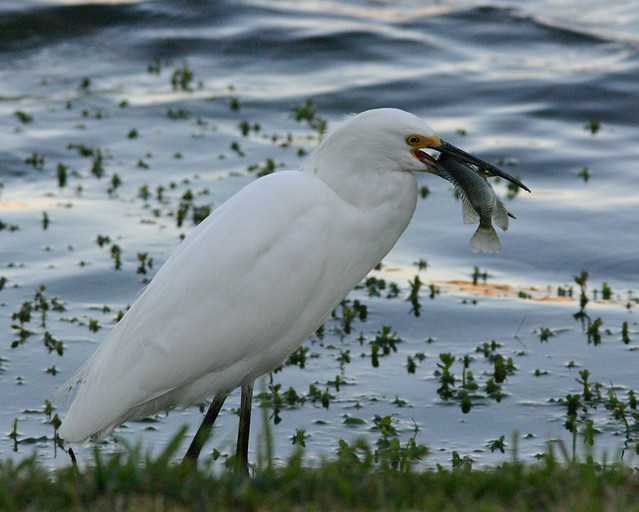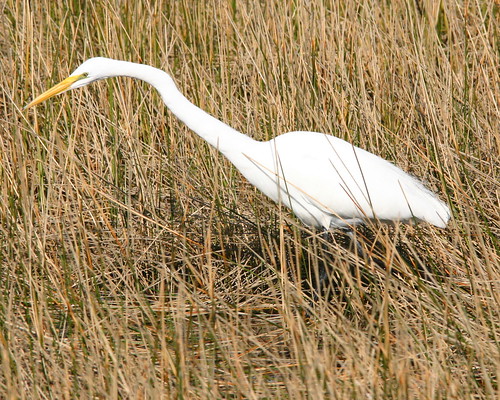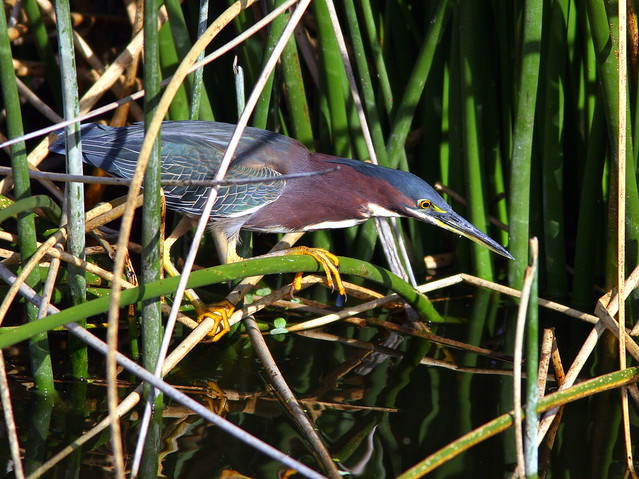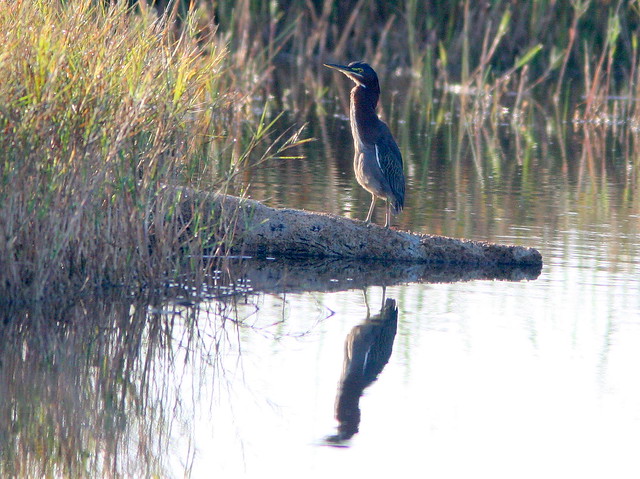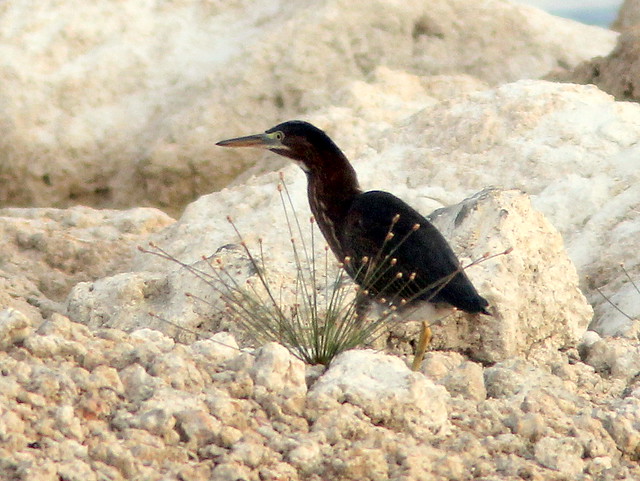Posted by: Ken @ 8:21 pm
At our South Florida home, we are lucky to live on a lake that is almost a quarter of a mile wide, in back of our home. This gives us a chance to practice identifying the waders that appear on the opposite shore, before reaching for the binoculars to confirm our impressions. Overall size, shape and behavior can be more reliable than color at such a distance. Taking inspiration from Jerry Liguori’s Hawks at a Distance, I found some illustrative examples in my photo collection.
These herons are standing quietly out in the open and staring down into the water with their bills just above the surface at about a 45 degree angle. You probably recognize them, but take a guess before hovering over the thumbnail, or clicking for a full-sized image:
Here is another heron doing the same thing:
And another:
OK, that was not entirely fair, but now you know that all three were the same species. The immature Little Blue Heron is white for its first year, before dark feathers emerge in an interesting symmetrical pattern. Here, a Boat-tailed Grackle chases after a sub-adult Little Blue that is molting into adult plumage:
Now, here’s a side-by-side comparison of two herons that are similar in size and assuming quite similar postures. Note the longer neck and bill of the one to the left, as well as the nearly vertical position of its bill (again, hover or click on the photo for more information):
The Tricolored Heron is an active hunter and stalker; seeing the ripples from the movement of a small fish, it crouches low…
…moves in and gets ready to strike:
The Tricolored Heron often pursues its prey actively, rushing about in almost randomly as it sights one prey item after another before making a choice:
This erratic “dance” in pursuit of prey is also characteristic of the Reddish Egret.
In the field, it may be difficult to judge the size of any bird without having a yardstick next to it. I think of the Tricolored Heron as a relatively large bird, but notice how it is dwarfed by the immature Reddish Egret standing next to it (Not perceiving the size differential, some birders actually misidentified the egret as a Little Blue Heron):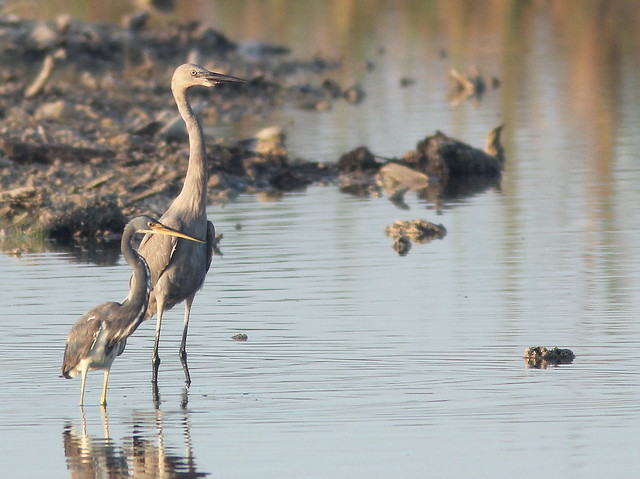
To my eye, white herons always appear to be larger than they really are. I had to see my photo to appreciate the great difference in size between a delicate Snowy Egret and the Great Egret behind it:
Close view of a Snowy Egret in our back yard. They also like to actively chase after their prey, sometimes stirring the water with their “golden slippers” to frighten fish into view:
This Snowy Egret, in the wetlands next to our home, was vigorously stirring the water with its foot, creating a bubble trail as it moved through the shallow water. Its thin black bill helps distinguish it from the immature Little Blue Heron: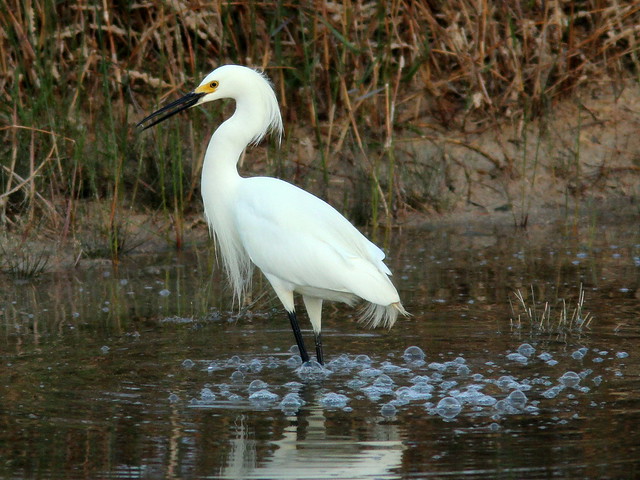
The Reddish Egret sports a prominent “chin:”
The Great Egret also has a long but less noticeable “chin.” It usually stalks slowly along the water’s edge or through marsh vegetation, its neck fully extended:
A Great Blue Heron may wait patiently in the same spot for many minutes, or slowly stalk for prey:
The short-legged Green Heron also relies upon stealth, often remaining immobile at the edge of the water in its typical hunting posture, waiting for fish or even attracting them by throwing sticks out as “bait:”
This Green Heron shows it has a rather long neck that usually is kept tucked in:
The Green Heron can sometimes look almost black, like a grackle with an oversize bill:
Cattle Egrets have short yellow bills and usually forage away from the water. This one is hunting for lizards in a hedge along a highway: